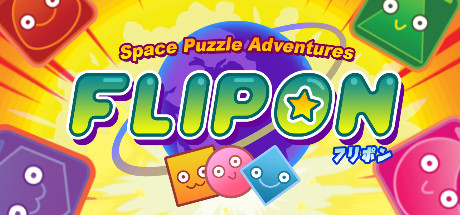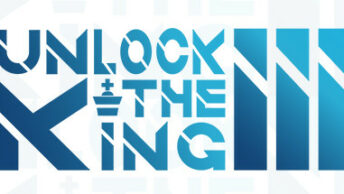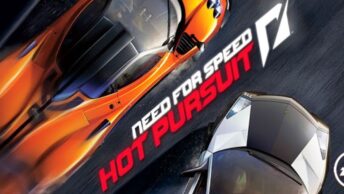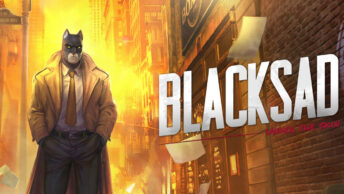Inspired by the cult classic Tetris Attack, Flipon is a reasonable facsimile, though it lacks the refinement that Nintendo was able to instill. However, it’s an enjoyable time-killer for those who like quick-paced puzzle games.
Type: Single-Player, Multiplayer
Genres: Puzzle, Match 3
Developer: Damien Mayance,
Pixelnest Studio
Publisher: Plug In Digital
Release date: 8 October, 2020

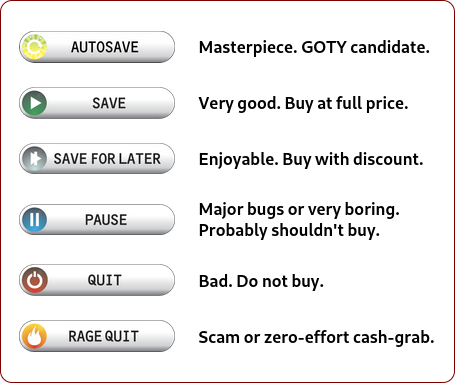
First Impressions
Lately, I’ve been watching videos over one of my favorite puzzle games, Tetris Attack (TA) for the SNES. I grew up with the game, so it’s rather dear to my heart. This small spree of videos led me to a channel I hadn’t watched for a while, ZetaPlays, and his video over Flipon (F). From watching his content, I could tell that F was quite similar to TA, yet still different from what I was accustomed to. However, my desire to play a game like TA was rather high, so it was a no-brainer for me.
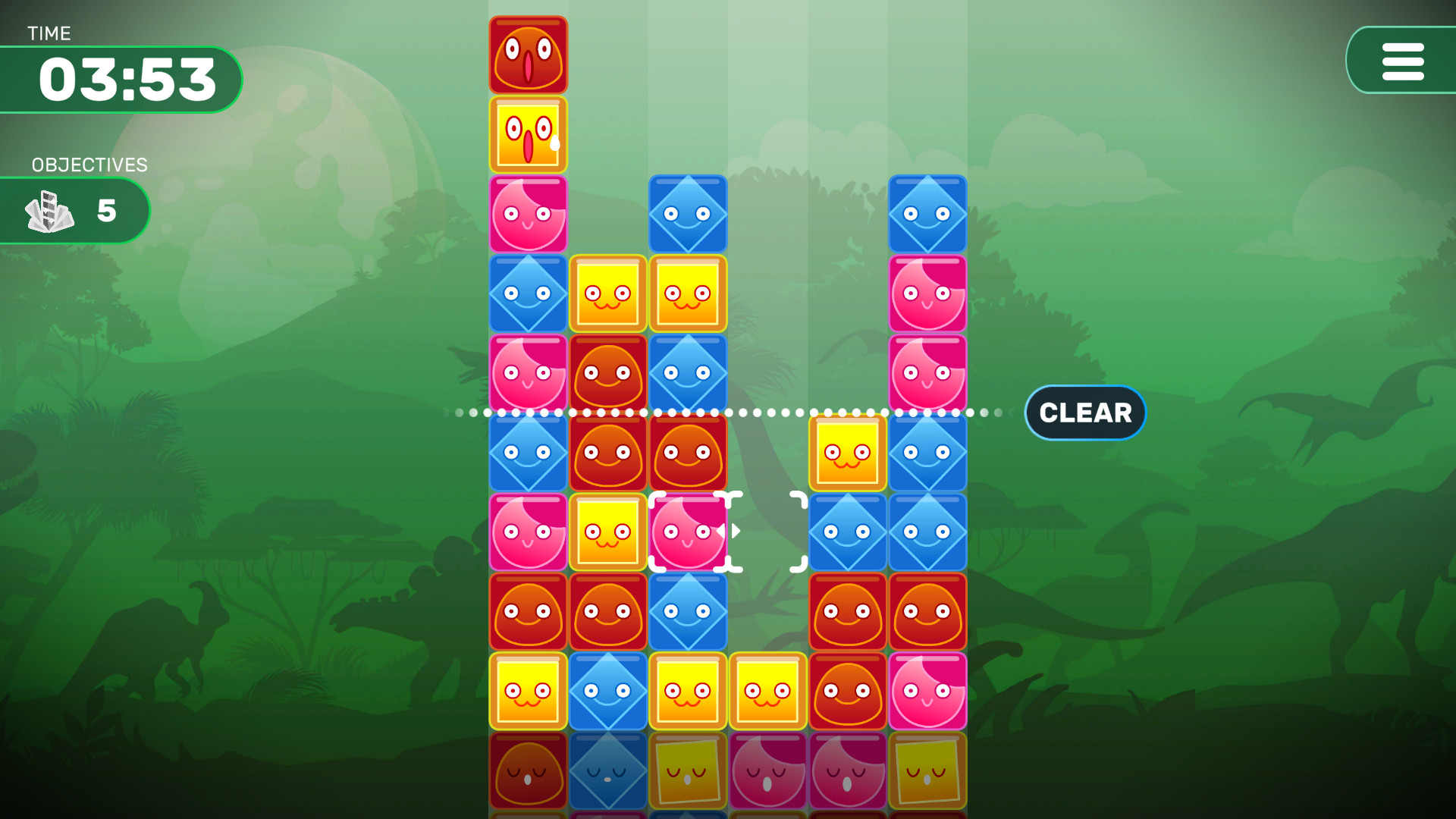
Gameplay
Since many people likely won’t be familiar with the TA series put out by Nintendo, I’ll try breaking down the basics of the game’s mechanics. It predates Bejeweled by a few years, and has a loose similarity in that the game is grid-based, with different colored blocks filling the field. However, instead of the entire field being filled at all times, you actively try to avoid the blocks reaching the ceiling, as that’s how you lose. Also, you still switch blocks that are next to each other, trying to line up 3 or more in a row, and as those are cleared, set off chains for more points. The big difference here is that your cursor only switches blocks horizontally, so the only way to bring blocks further down is by clearing out blocks beneath them or dragging them off to an empty space. Another big difference is that you can move blocks around with complete freedom, instead of only being able to switch blocks if they’ll match at least 3 in a row. Though these are minor differences, it leads to a game that is much faster paced than Bejeweled tends to be, which is the reason I love it so much.
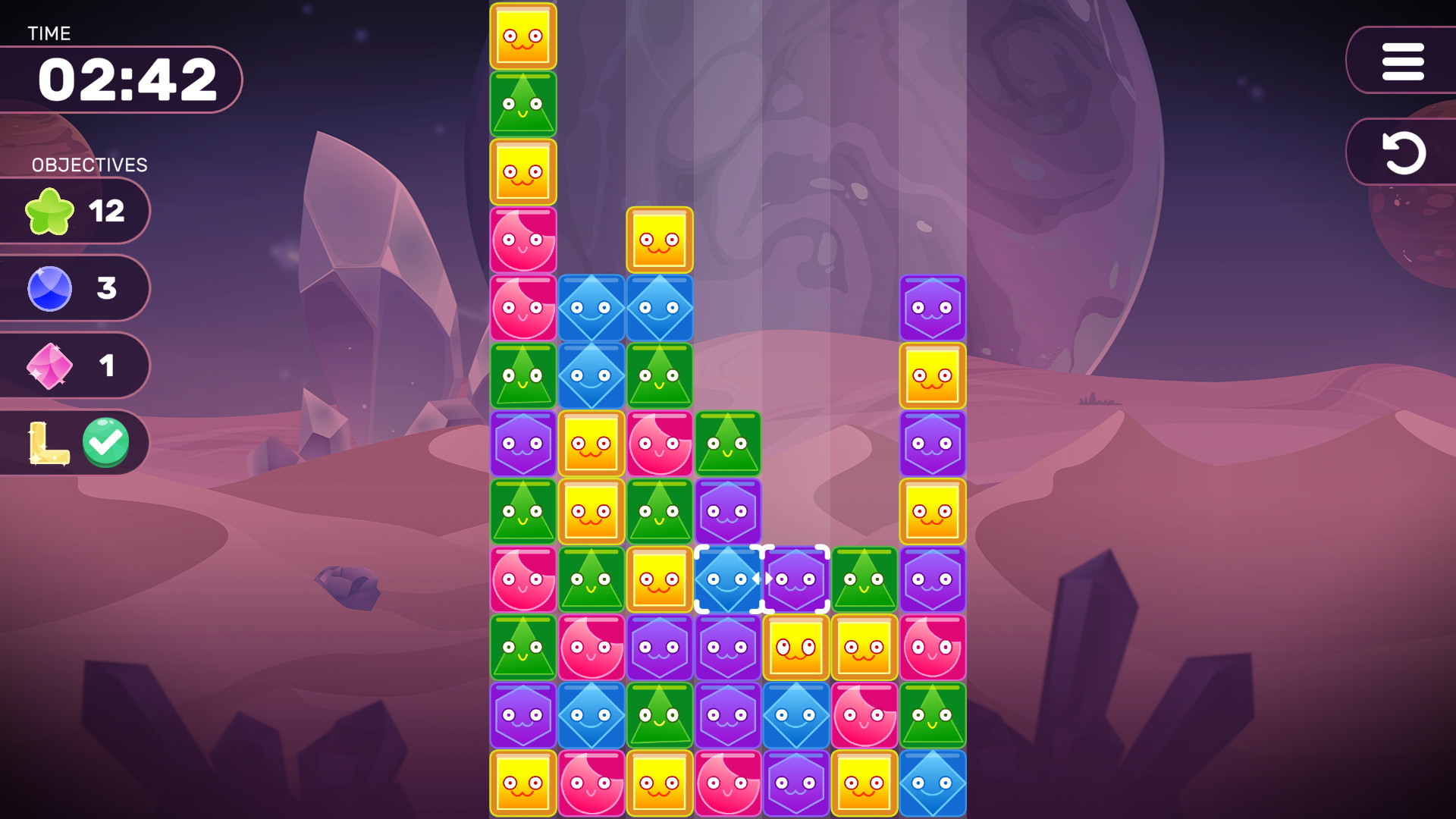
In F, there are 4 game modes available. Campaign has you play through a series of different trials, such as surviving for long enough, clearing every block on the screen with none left over, or beating an opponent head to head. Score Attack functions as the game’s “Endless Mode,” where you try to earn as many points as possible before the screen gets too fast and you lose. Challenge is a new mode for this kind of game, where you have a checklist of clear conditions to meet. You only have a single field of blocks available in order to get enough 4, 5, and L-shaped combos. Versus has you play against up to 3 enemies at once, whether they’re another person or the AI. Clearing 4 or more blocks in a row or getting chains will create garbage blocks that your enemies have to break down into normal blocks. This doesn’t have its own story or gauntlet to play through, which was always my favorite mode in the original games, which is disappointing to me.
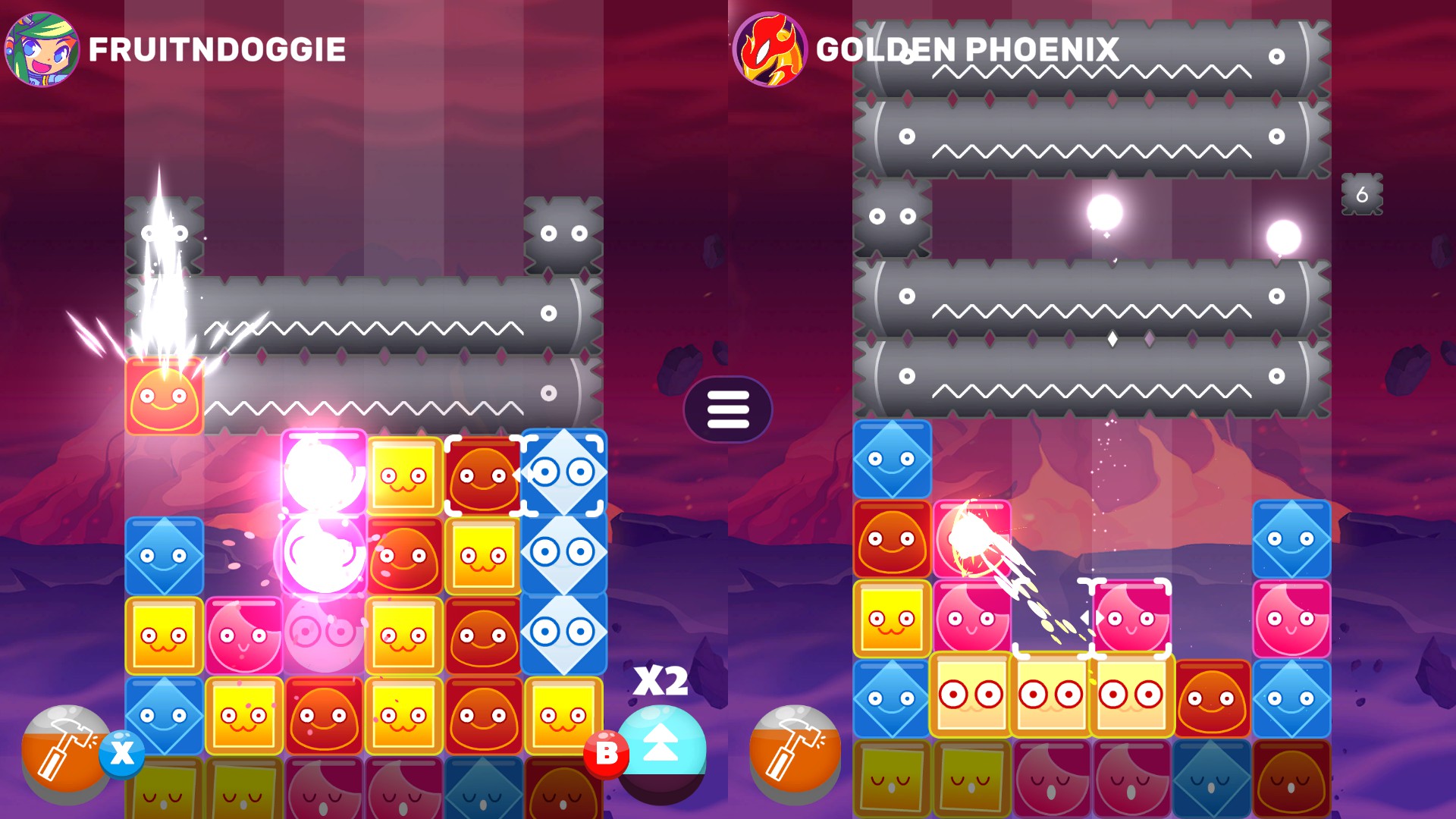
Controls
F can be played with either a keyboard or controller, and when I played with the controller, it worked pretty well. I did have some issues with selecting the right block at times, but I know that is not an issue with the game. Instead, it pertains to the Xbox 360 having an inferior ‘D-pad,’ and I found that using the ‘L joystick,’ worked much better, although still wasn’t up to my picky standards. Switching blocks is done with the ‘A’ button, raising the stack is done with either ‘B’ or the ‘R trigger,’ and activating a power-up is done with the ‘X’ button. This seems to exist only in Campaign and Versus Mode, which is built up by clearing blocks. The effects can range from dropping extra blocks on your enemy to blowing up a chunk of your own. If you’re familiar with TA, the game feel will be quite different, but if you can get into the groove, it still delivers a similar experience that’s enjoyable.
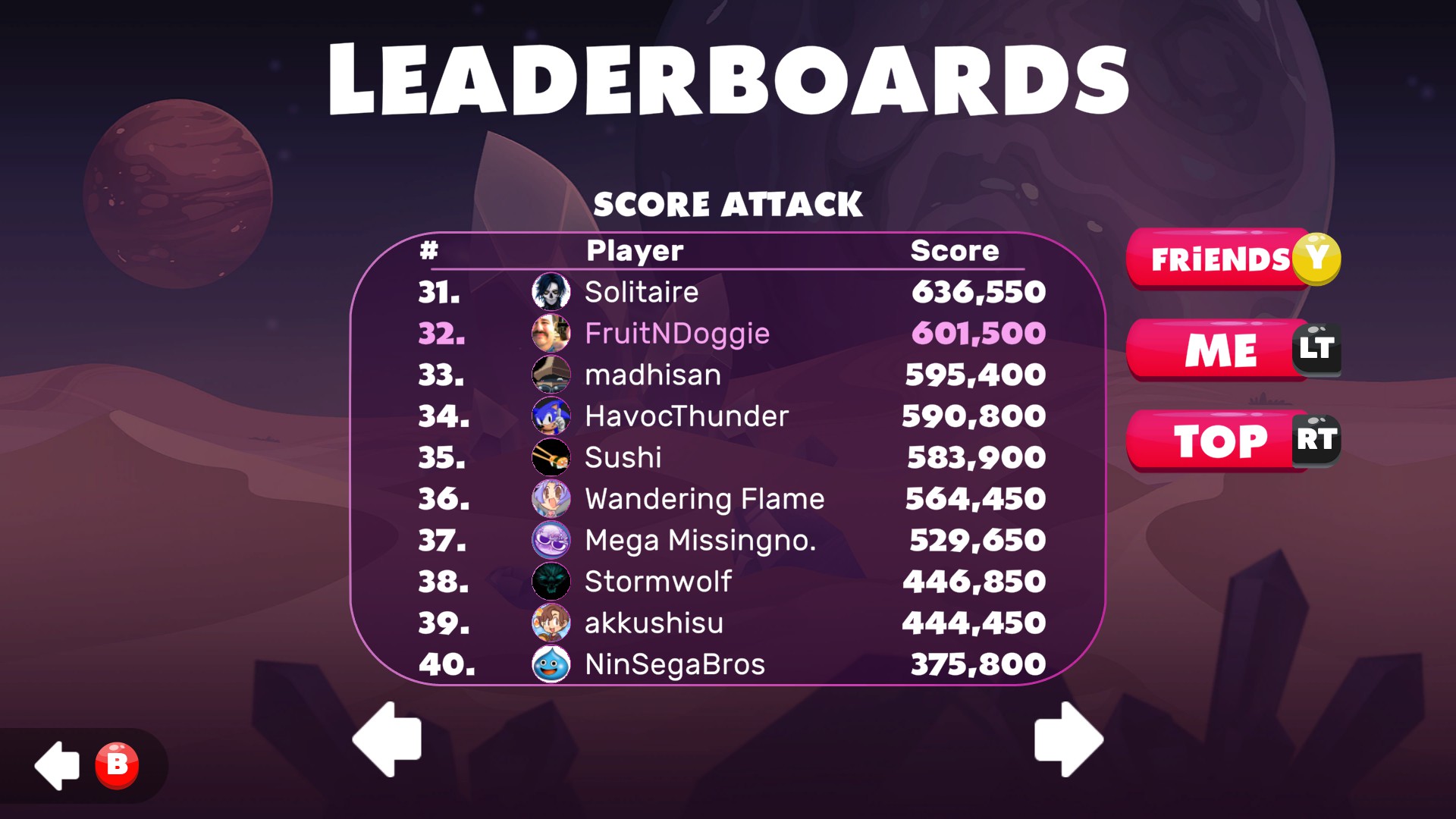
Story
While going through Campaign Mode, you learn more about your small crew of space adventurers. The ship captain is Kat, she has a loyal talking dog named Laika, and a robot helper called Ordy. They’re looking to scavenge flipoblocks, which can be sold back on Earth for a hefty profit. It’s a simple, cute adventure, with quite a bit of Engrish thrown in. From what I know, this is made by an Asian team, or so I’m concluding from some of the people on the leaderboard. It’s a rough translation here and there, but I also understood everything that was being said. Plus, it’s only the story, so it’s not as if the instructions are incomprehensible gibberish.

Graphics
The overall impression I get from the game’s visuals is that of a simple, cartoony style. For instance, during the small story segments, the characters will talk with one another, with each person showing up to deliver their lines. They have very basic pictures and poses, without a lot of detail. When looking at Kat’s design, one of her images shows her with fingers, but otherwise her hand is made up of a circle instead. Since this is a puzzle game, the main graphics are made up of squares, so there’s not much to look at as you play, except for the backgrounds. I wasn’t paying any attention while playing, but they’re nicely drawn space settings, giving the screen some flair.

Sound Design
It’s somewhat difficult to determine since I didn’t find a soundtrack for F, but I don’t think there are that many songs in the game. I checked some of the different stages in Campaign, and it didn’t seem to play different music based on which world I was at. It serves the job as general background noise, so I don’t have much to either complain about or praise. Admittedly, I like how it increases in intensity as your blocks get too close to the ceiling, as that’s a nice touch.
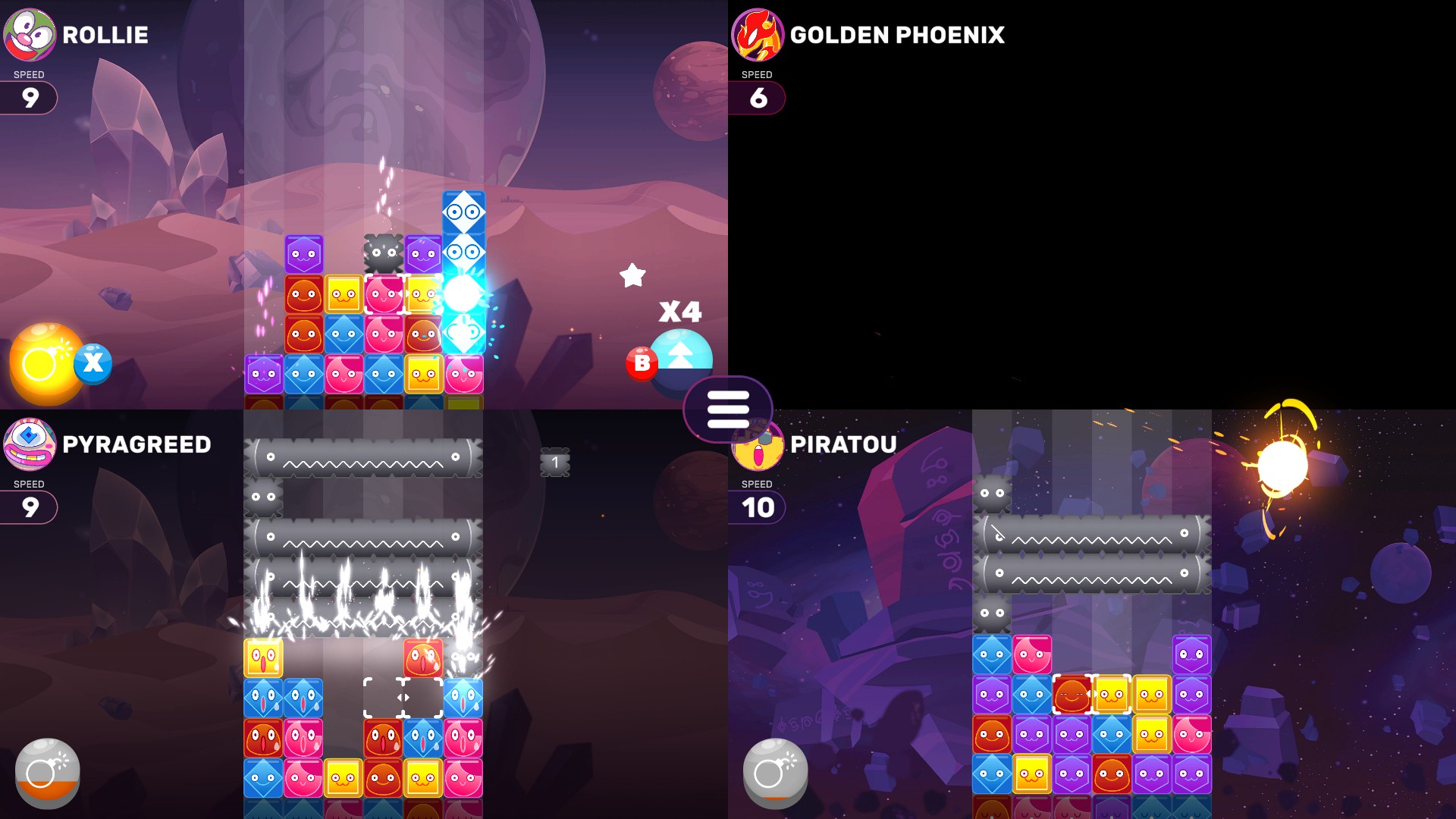
Pros
- The ability to raise the stack without having to wait for blocks to clear could lead to incredibly long chains and combos. It’s hard to pull off consistently, but if you adapted to this potential, it’d make this game so much fun.
- For those who have similar urges for Tetris Attack gameplay, this does resemble it closely enough to satisfy that desire.
Cons
- The difficulty is quite high to someone who’d be unfamiliar with the game, and there’s not really a good game mode for somebody to practice without it being too difficult or kind of boring. I think that Score Attack should have different difficulty levels, where the speed wouldn’t increase as quickly. It’d be a good place for people to learn how to play. Having options to toggle on and off, such as junk falling down, could also be a nice touch.
- Versus Mode acts strangely when played with a controller. When I try playing another round, it defaults to the keyboard being in control, and won’t properly respond to my controller unless I back out with ‘Escape’ and enter back in. Also, I don’t know that the AI difficulty is correct, because the two hardest choices were still really easy to beat.
- It’s not a bad thing that the mechanics aren’t exactly the same as the original games, especially since this is made by a much smaller team. However, there are certain aspects that don’t seem to function as intended, such as what counts as a chain. They seem to be working on this and trying to get it right though, based on the update history.
Tips
- It gets kind of confusing how they use the word combos to mean more than one thing. However, clearing any amount of blocks temporarily stops the stack from moving up. While this is in effect, you can keep clearing more blocks (this is referred to as combos), which is a great way to rack up points and attacks against enemies.
- Campaign is a good starting point, and if it starts getting too difficult, I’d suggest practicing in Challenge and Score Attack. Being able to spot blocks to clear quickly is very important in this game, so this could be helpful. Another good option might be battling low level AI in Versus Mode.
- Clearing garbage blocks is a priority, as they can accumulate suddenly.
Final Thoughts
Having played a few of the games that this was inspired by, I really had no difficulty making my way through the Campaign. I think I failed perhaps 5 times or less, which isn’t bad across 80 levels. From what I experienced, as the game gets rather hard in the last couple of worlds, it seems like this was made for people who would be fans of TA, though they added some of their own twists to it. However, the first few worlds were also so simple, that it kind of threw off a chance to build momentum, because stages ended so quickly. I think the requirements for beating them could have been tweaked a bit, so they’d still be easy, but not end so dang fast either. That was one of the benefits of the Challenge stages, as you do have to be more careful and thoughtful with them. Regardless, I do have some criticisms, and things I would love to see added if possible, but it gets enough of the spirit and mechanics of the original across that I can’t dislike it. I’d suggest getting it if you’re a fan of TA, or you enjoy quick-paced puzzle games.

